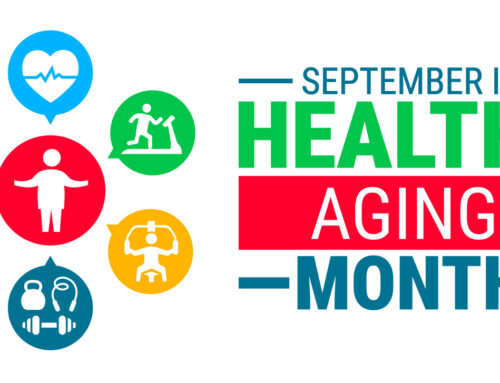Recently, an article was published that focused on ten issues facing men that often go unrecognized. The article was intriguing for many reasons but one of the topics that was most concerning was the rate of depression in men and the toll that is taking on our society. FirstLantic decided to further explore the extent of the problem and the ways that more men can get the help that they deserve.
The Numbers
While depression is more common among women than men, studies show that the illness often goes undiagnosed in men resulting in higher suicide rates. In fact, according to research, men died by suicide 3.54x more often than women in the year 2017. And white males accounted for 69.7% of all suicides with the highest proportion recorded in middle-age white men in particular. In addition, men that do not get treated can resort to substance abuse (which can lead to violence) and/or homelessness. In fact, studies show that seventy percent of homeless people in the United States are men.
Possible Causes
Causes of depression can include:
Genetic factors—people with a family history of depression may be more likely to develop it.
PTSD – according to Pew Research, as of 2016, there are now more Gulf War era veterans than Vietnam Vets with 7.1 million having served from August 1990 through the present. Many of these veterans are coming home with battle wounds that may not be physical but rather are invisible mental scars.
Environmental Stress—financial problems, loss of a loved one, a difficult relationship, major life changes, work problems, or any stressful situation may trigger depression.
Illness—depression can occur with other serious medical illnesses, such as diabetes, cancer, heart disease, or Parkinson’s disease. Sometimes, medications taken for these illnesses may cause side effects that trigger or worsen depression.
Changing norms within society – the traditional role of men as the sole provider for their family has changed dramatically over the last fifty years. Women are now graduating from college at a higher rate than men with 134 women graduating for every 100 men and women are earning more than men in almost a quarter of couples. Yet, other research shows that 71 percent of people still say that to be a good husband, men should be able to financially support a family which obviously can create confusing contradictions for men.
Why More Men are Not Getting Treated
There are many theories as to why the suicide rate is higher in men as whole, but one possible explanation may be that men are often taught to compartmentalize their feelings and not to show weakness. Women are much more comfortable seeking out help and discussing their problems whether that be with family, friends or professionals. Many men will hide the fact that they are sad or depressed and may exhibit signs of anger, irritability or aggression instead or begin to self-medicate through alcohol or drugs. As expert psychiatrist Dr. Craig Beach said, “health care professionals and even family members may not pick up on the symptoms, so men can end up with severe depression before it’s detected.”
In addition, men are less than half as likely as women to seek professional help themselves. They may feel that they will be stigmatized in some way especially men that believe in more traditional norms of Masculinity. There are also other signs that families and friends should be aware of such as a lessening of sexual desire and sleep pattern changes. A full list of symptoms can be found here.
So, what can be done?
The bottom line is that there is no magic bullet and you can’t simply tell someone to get over it. Depression is a serious illness that needs to be treated by a professional just as any other illness. If you do suspect that a friend or family member has depression, offer to help find a doctor or mental health professional and then help them make an appointment. Men who may have trouble admitting that they are depressed might agree to go based on seeking help for physical symptoms such as sleeplessness or feeling run down. Speaking with a primary care provider might be a good first step but try to get recommendations for doctors that are in tune with the signs of depression in men and won’t alienate the patient at the suggestion. Also, make sure that the doctor is informed of any medications that the person is taking as those could be part of the problem.
Other ways to help:
Listen – don’t ever let the person feel that they are alone or that their feelings are not legitimate
Encourage – activity whether physical or social that you can do together.
Don’t ignore – comments about suicide and alert a doctor immediately if they express those feelings.
DO ignore – social media if it is making you or someone else feel worse or giving the feeling that everyone else’s life is better.
In summary
Maybe the most important step in lowering the suicide rate among men is to remove the stigmatization and talk about it more openly. It’s crucial for men to know that they are not alone, and depression is a real illness and it isn’t their fault. We also need to recognize the signs of depression as early as possible and try to intervene before it is too late. Finally, we need to teach our children that it’s okay for girls and boys to express feelings of pain and sadness.
Resources:
If you are a veteran and want to know more about FirstLantic’s services best home care florida , please click here
• National Institute of Mental Health website at www.nimh.nih.gov/FindHelp
• National Suicide Prevention Lifeline 24-hour hotline at 1-800-273-TALK (1-800-273-8255); TTY: 1-800-799-4TTY (1-800-799-4889)
• Veterans Crisis Line at 1-800-273-8255 then press 1
• Mental Health.gov https://www.mentalhealth.gov
• National Library of Medicine’s MedlinePlus service
• Substance Abuse and Mental Health Services Administration – https://www.samhsa.gov/find-help/national-helpline
• Anxiety and depression support groups – https://adaa.org/supportgroups
 AVAILABLE 24 HOURS A DAY/7 DAYS A WEEK
AVAILABLE 24 HOURS A DAY/7 DAYS A WEEK Careers
Careers







